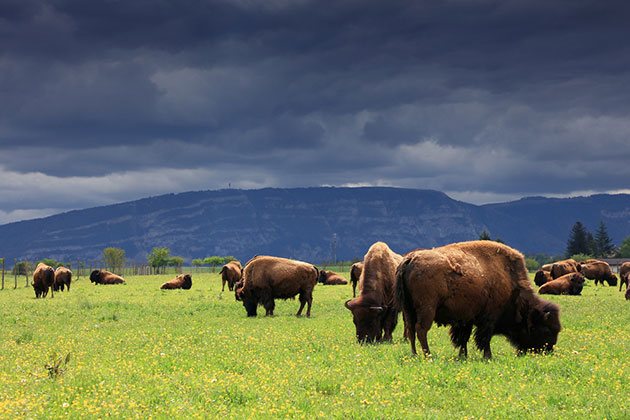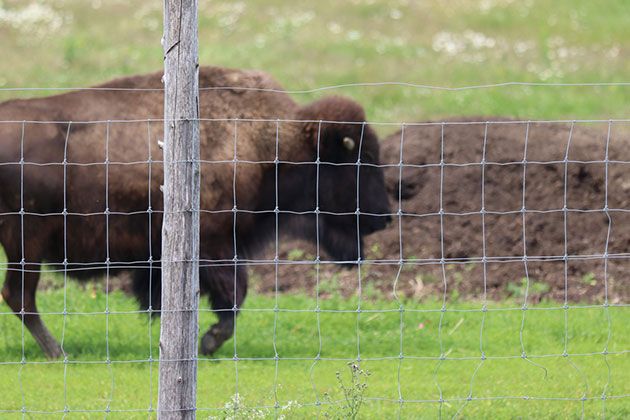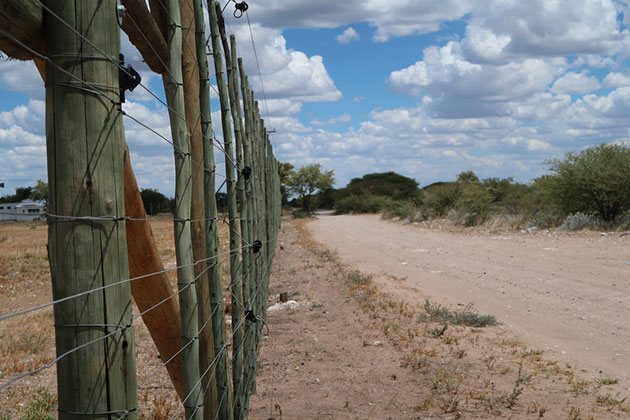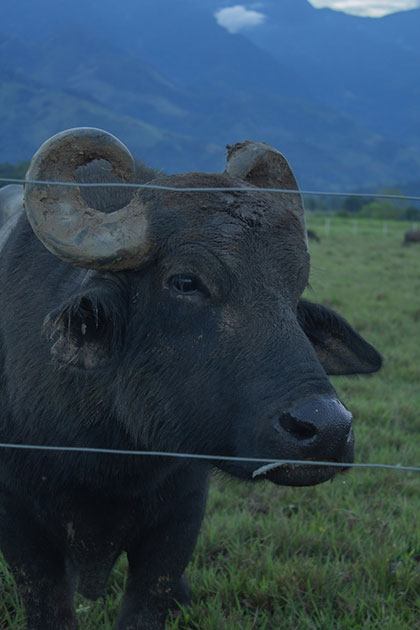Being the largest mammal in North America, a buffalo is no gentle giant to its owners!
You must learn how to deal with one, and by that, it’s implied you keep them properly secured. Some argue that buffalo or bison is not an animal you want to contain.
Although they are known for their stubborn and temperamental nature, farmers agree that one of the best solutions for adequate containment is electric fencing.
But, as you cannot just pick any fence used for livestock, it’s best to educate on electric fencing for a buffalo.
A buffalo has an exciting history of behavior, so learning all about their nature will prepare you to pick the best electric fence for buffalo!
Table of Contents
Meet One of the Largest Mammals!

Did you know that American buffaloes are not the same as others? That’s right! They are significantly different from water buffaloes in Asia.
American bison have a smaller head and different shapes of horns, while the Asian kind has a “mustache-alike” horns. Additionally, American bison is much easier to domesticate.
That being said, American bison can be primarily found in North America. It measures out in approximately 6 feet, while they are at least 11 feet lengthwise!
In colder months, you can expect the bison to have a thicker coat than they shed during summer.
Therefore, it’s essential to find the proper type of fencing that won’t cause injuries when they have lost most of their coat.
One thing you should never underestimate about them is their speed.
Many will look at their cumbersome figure and think the bison is not the fastest of its kind. Although that may be partially true, a bison can run up to 40 miles per hour!
Behavior-wise, a bison is relatively lazy at times. However, once they feel threatened, a bison can get extremely violent and dangerous, even for its owner.
It’s recommended that humans not get as close as 25 feet away from the bison.
How to Prepare a Bison Fence?

As a bison is a large animal, it will require large grazing pastures for fencing.
Therefore, before you get a fence line, make sure you have set a properly sized pasture for the bison. Otherwise, this capricious animal can easily show dislike.
Spoiler alert, this is not something you want to experience!
Once you have chosen the area for fencing, make sure there is some shade. Although this is unnecessary, it will be the minimum you can do for them during summer.
Also, bison will want some heat relief because they shed coats in the summer months.
Because bison are vegetarians, they will require tree leaves, flowering shrubs, and grass to remain healthy and strong.
Usually, bison will need to eat at least 1.6% of their total body mass throughout the day.
Adding a few rocks is also a good idea! Again, it will be beneficial for all the back and neck scratches.
High-tensile, Woven, or Barb Wire: What Is the Best Bison Fencing?

You can go with high tensile wire or woven wire as far as the fence supplies go. Some even recommend barbed wire.
However, barbed wire is not regulated in all areas. For example, it’s forbidden to use bison containment in some countries as it can cause irritations and serious injuries.
High tensile smooth wire is one of the best fence wires to maintain a bison within the area.
It’s durable and available in steel and aluminum alternatives. Plus, it costs less than the majority of alternatives.
The number of high-tensive wires will depend on the area, but at least three out of eight wires should be electrified.
A high tensile smooth wire is best with a fixed knot fence design. It has the longest-lasting performance and is better than a barbed wire.
Your other choice could be the woven wire.
It costs less than a high tensile one, but you will need that one roll to cover the entire pasture. Usually, most owners use at least 47-feet of woven fence wire.
It should be attached to the poles 10 inches above the ground.
The entire post spacing is approximately 16-20 feet. The spacing between the fence wires needs to be at least 12 feet in pastures.
Posts & Spacing
Bison fencing posts should be at least seven-foot tall.
Bison are known to be high-power animals and can jump pretty far. If you live in a heavy snowy area, you need to consider posting the fence lines higher during winter.
Luckily, a content bison with food and water should not have the urge to skip over the cross fence lines.
Not to mention, the posts and the rest of the fencing products need to be of exceptional quality. The materials should be sturdy, durable, and UV-resistant.
If you decide on a barbed wire rotational grazing fence, you need to know they work best with treated wood posts or a unique combination of wood and T-posts.
Can You Teach a Buffalo to Respect the Electric Fence?

Bison are brilliant cattle-like animals, and they will quickly learn how to respect the electric fences.
But, like all cattle, buffaloes learn their lesson when they contact a hot wire.
Many fear their aggressive nature and think they cannot be learned to stay within the fence lines. So an old-fashion trick is to use cattle corrals and chutes.
The structures are there to keep the livestock and cattle in place and prevent the breeding of the herds.
With bison, you can use plank corrals as they are highly visible to the animal.
With their many benefits, corrals will help your bison respect the boundaries and prevent the search for an escape!
Like a bull fence, a fence should be charged at least 4,000 volts minimum on a low-impedance charger.
On that account, it’s also beneficial to cover the pipe corrals with plywood panels. Generally, it all comes down to good management.
When you learn how to approach a bison in a friendly but stern way, you will gain their trust and have them ready for containment training.
FAQ’s
How tall should the fence be for a bison?
A bison is known for its high jumping skills. Therefore, a fence for bison containment should be at least 60 inches tall.
But, if you live in a climate that is often visited by snowstorms, you should consider installing the fence higher than usual.
How many volts is an electric fence for bison?
An electric fence for a bison should be charged with 4,000 volts. This animal shares similar characteristics to a bull, where they also require high-charged fences.
Additionally, fence lines should be used with a low-impedance charger.
Conclusion
It all sums up how you manage the buffalo.
Keeping them well-hydrated, fed, and stationed should be your primary concern. The best electric fence for buffalo is a great way to secure the animal in the large pasture.
As buffaloes are not domesticated animals, they will require a lot of patience and care than other cattle.
Don’t be so quick to judge their temperamental nature, as buffaloes quickly learn their way with the fence.
It is in your care to offer training and a large pasture they can roam around.
